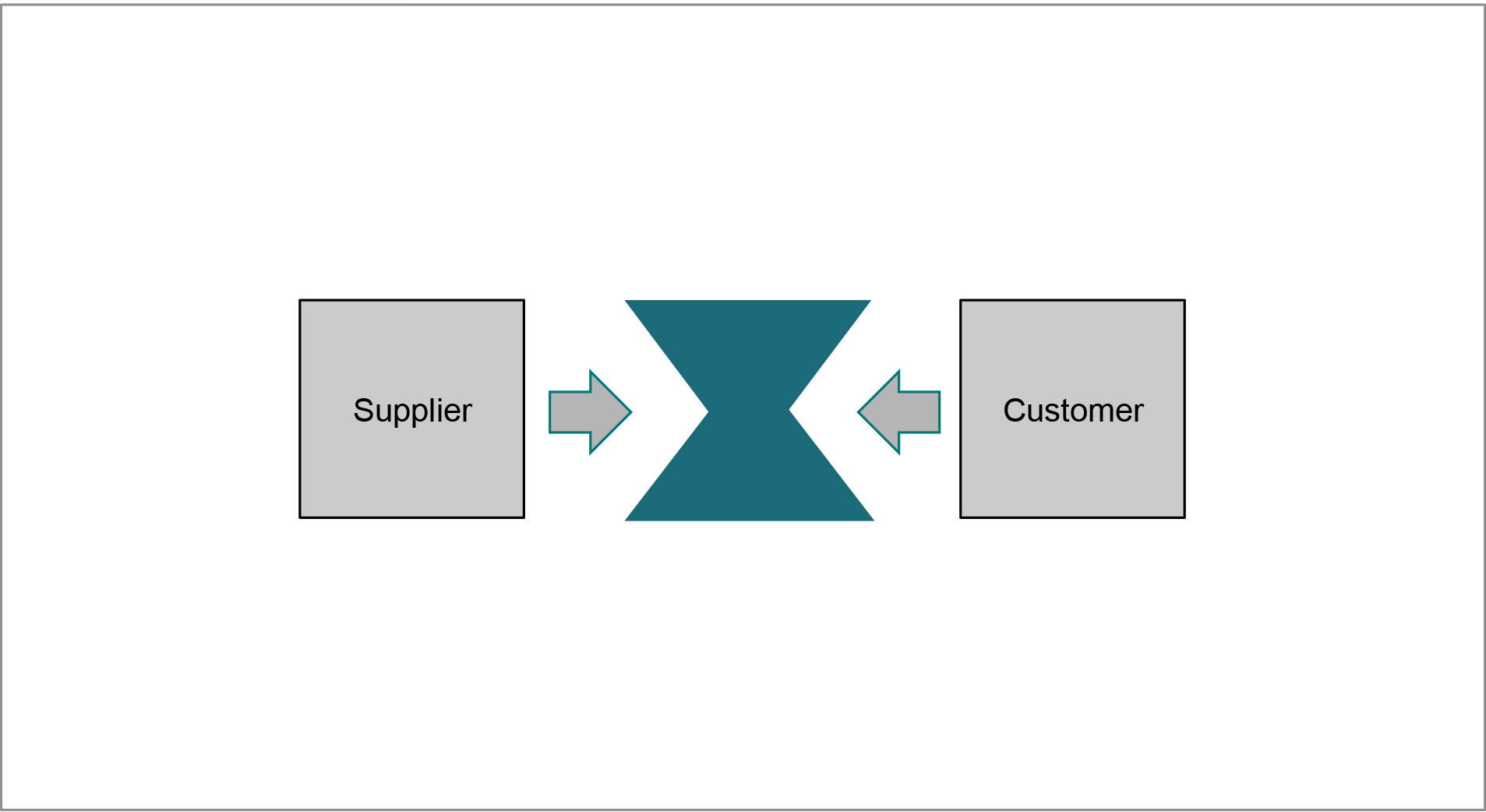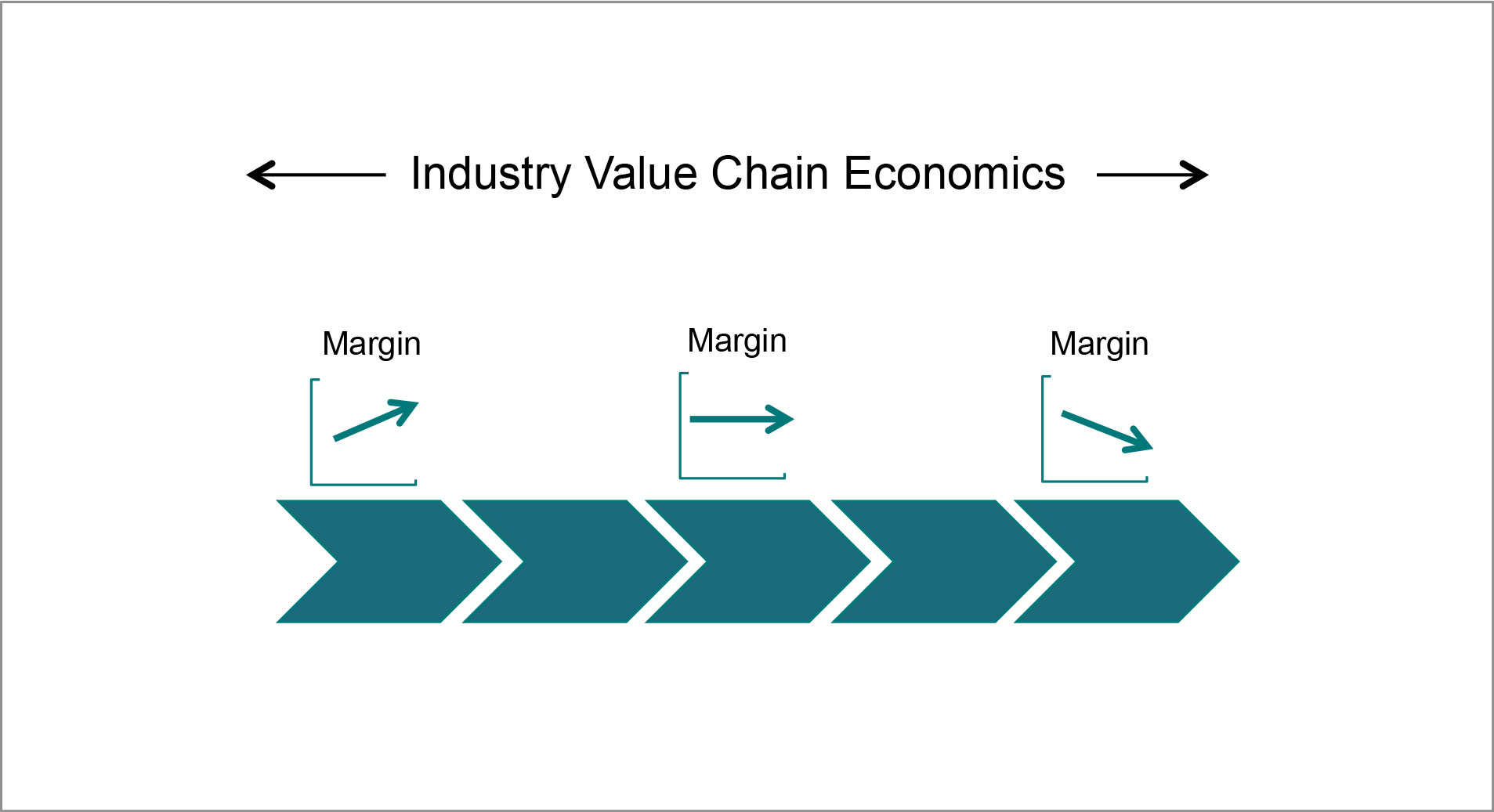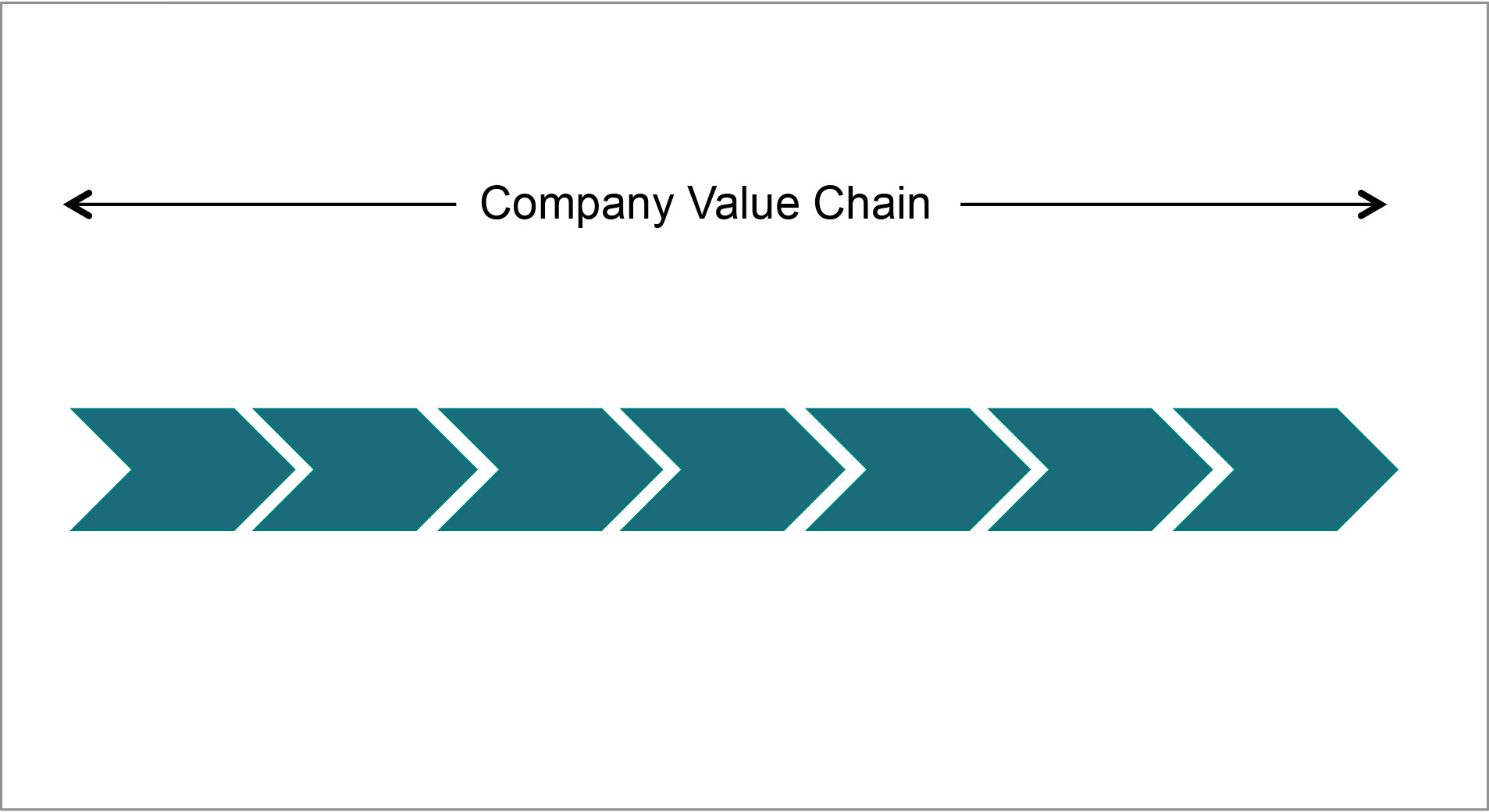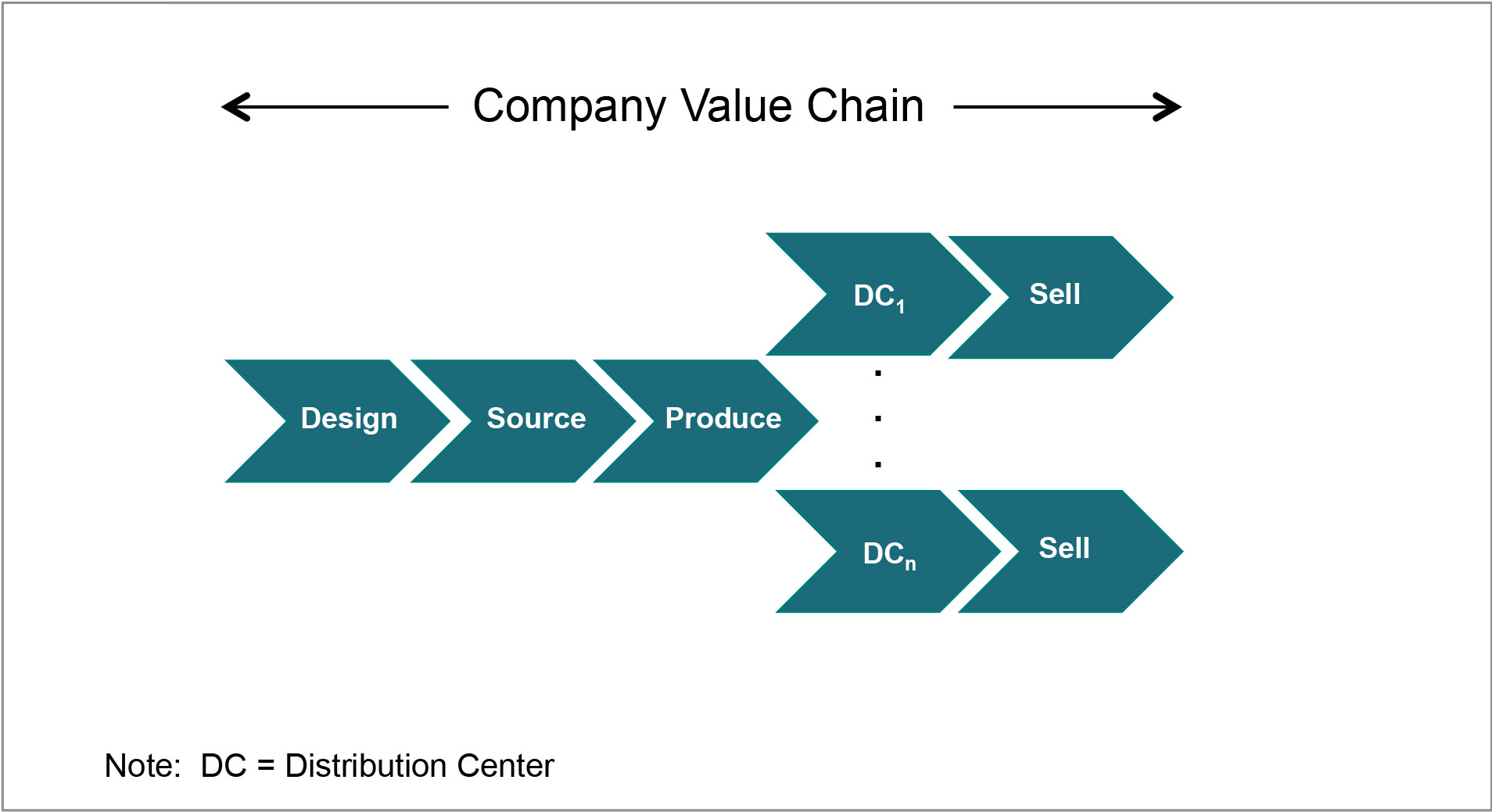Industry value chains have become noticeably unsteady. They are subject to constant change driven by mergers, overlapping industries, blurred lines from new technologies, and disintermediation by new entrants. Within this context of market change, earnings regularly get affected.
A common problem occurs when the industry value chain squeezes a company on both sides, i.e., from customers and suppliers. Other prevalent forms of downward pressure of the value chain on earnings result from long value chains or profit shifts along the chain. Here is what we see.
COMMON ISSUES
1. Value chain squeeze.
A company can become sandwiched between dominant suppliers and customers exerting a squeeze from both sides of the value chain with such excessive force that it leaves no space for profit. This situation happens when suppliers and customers improve their performance or their size faster than the firm. The automotive industry represents a prime example of dominant suppliers and mega-dealers squeezing car manufacturers.
2. Long industry value chain.
Value chains with 10 or more steps give rise to significant variations in profit margins and return on capital at each stage. This condition exposes companies operating at unfavorable stages in the value chain to poor cost economics. The critical challenge is to gain control of the profitable stages in the value chain. The luxury-goods industry illustrates the wide discrepancy in profit margins between retailers (low margin) and product manufacturers (high margin).
3. Profit shift along the chain.
Industries are dynamic by nature as players improve their relative market performance, adopt new technologies, consolidate, outsource or insource capabilities. As a result, it is not uncommon for profit margins to shift along the value chain to the points of strategic control – a situation that can leave some firms in a weak economic condition. The pharmaceutical industry is an excellent case in point where massive profits have shifted to small biotech firms.
In addition to the industry value chain, the company’s value chain can also hurt the firm’s economics. Here are two common issues that we see.
4. Long company value chain.
Companies with long value chains become weighed down by massive cost structures. Long value chains tie up large amounts of capital and infrastructure. They also expose the company to competitors to conceive new models of value delivery and ultimately disrupt the firm’s competitive position. Former PC manufacturers illustrate the state of companies with long value chains that eventually became supplanted by Dell’s make-to-order business model.
5. Multiple company value chains.
From time to time, companies may be operating two or more value chains with duplicate costs across divisions. This condition usually results from growth initiatives, particularly mergers and market expansion. The challenge is the trade-off between operating multiple value chains to serve multiple markets or running a consolidated value chain. A case in point is a company operating numerous distribution centers to satisfy customer requirements while incurring significant operating costs.
FIXING THE PROBLEMS
These problems unfold gradually and take a long time to manifest because management teams are usually concerned with other immediate issues. However, the longer these situations persist, the more intense the pressure on earnings. Over time, the firm’s economic position can become severely compromised to the point of not covering the cost of capital and impairing the company’s competitive position. While every company is different, fundamental questions to help guide management in these situations include the following:
- How is the industry value chain impacting the firm’s economics?
- What are the stages in the industry value chain and where are profits being made?
- Are we being squeezed for profits? Are there underlying power shifts taking place?
- Where and what are the strategic controls points in the industry?
- Is the company’s value chain impacting its cost economics favorably or unfavorably?
The prescription for solving downward pressure of the value chain on the company’s earnings is to respond strategically. Companies can use various value-chain strategies to improve returns and strategic control and exploit hidden opportunities. These strategies modify the firm’s value chain in the context of customers, suppliers, and the industry as a whole.






